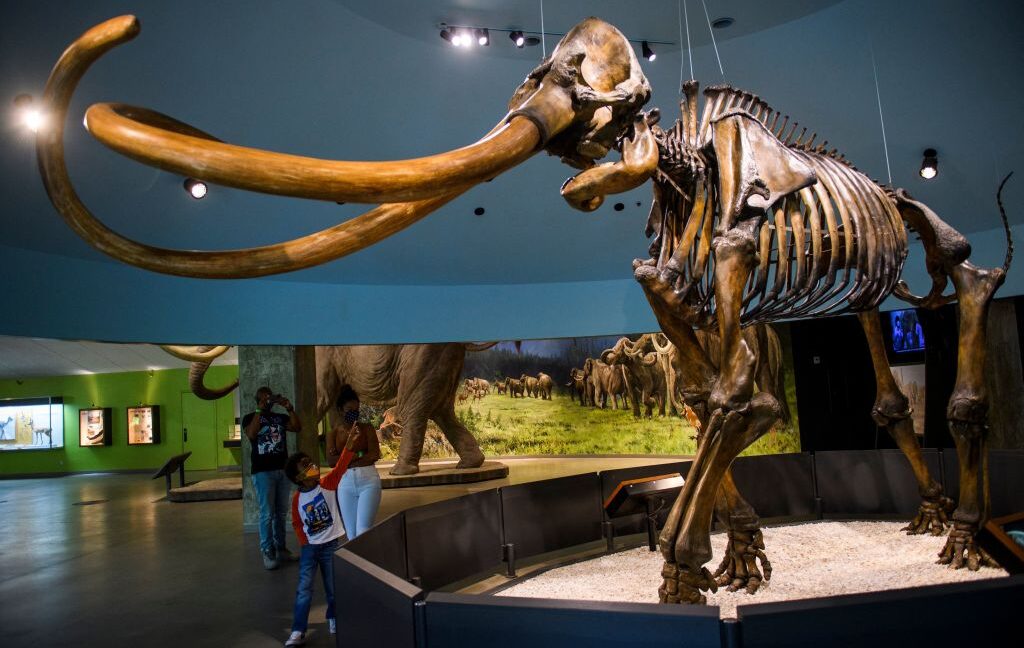Science
Central American Mammoths Reveal Surprising Genetic Links

Recent research has unveiled surprising genetic connections among Central American mammoths, particularly those discovered in the Basin of Mexico. A team of researchers has analyzed ancient DNA from mammoth remains, shedding light on the genetic diversity and relationships of these prehistoric creatures. Their findings suggest that Columbian mammoths, which roamed areas as far south as modern-day Mexico City, form a distinct genetic cluster, separate from both woolly and other Columbian mammoths.
Traditionally, mammoths are categorized into types based on their geographic and environmental adaptations. The most notable species include the woolly mammoth, known for its thick fur and adaptation to cold climates, and the Columbian mammoth, which inhabited warmer regions. Genetic research had previously indicated that woolly mammoths likely descended from the Eurasian steppe mammoth, but the origins of the Columbian mammoth were less clear, with conflicting data suggesting it could be a hybrid of steppe and woolly mammoths.
The challenge in studying the Columbian mammoth’s genetics lies in the preservation of ancient DNA, particularly in warmer climates where such material degrades quickly. Most existing genetic information derives from specimens found in colder regions, where DNA preservation is more favorable. In contrast, the recent study focused on mammoth bones unearthed in the Basin of Mexico, an area with a rich history of mammoth discoveries, including over 100 individuals found during the construction of Mexico City’s international airport.
To enhance their analysis, the researchers concentrated on the mitochondrial genome. Unlike nuclear DNA, which is inherited from both parents and provides detailed ancestry information, mitochondrial DNA is passed down maternally and is often more resilient to degradation. The team successfully sequenced 61 new mitochondrial genomes from 83 samples, with 28 of these deemed of sufficient quality for analysis.
Genetic Findings Challenge Traditional Mammoth Classifications
The results of the genetic analysis produced unexpected relationships among the mammoth populations. The Mexican specimens clustered together, yet showed three distinct groupings within that cluster. Notably, the placement of this cluster in the broader genetic tree revealed that some Columbian mammoths from further north were actually more closely related to woolly mammoths than to those found in Mexico.
This phenomenon raises intriguing questions about how mammoth populations interacted and evolved. The researchers propose two main hypotheses to explain these genetic patterns. One possibility is that what we classify as the Columbian mammoth resulted from multiple hybridization events occurring at different locations, leading to isolated populations that shared genetic traits based on geographic proximity rather than species identity.
The alternative explanation, which the research team favors, suggests that North American woolly mammoths carried diverse mitochondrial lineages by the time hybridization began. If hybridization occurred among a substantial number of individuals, various lineages could have been integrated into the population that gave rise to the Columbian mammoth.
The findings emphasize the complexity of mammoth genetics, highlighting how geographic location may play a more significant role than species classification in understanding their evolutionary history. As the researchers noted, the genetic connections among these ancient mammals challenge conventional views and underscore the need for further studies, particularly involving nuclear DNA, to clarify the genetic landscape of the Columbian mammoth.
While the success rate of obtaining mitochondrial DNA from the Mexican mammoths was promising, the researchers acknowledge that further investigation is necessary to paint a comprehensive picture of their genetic history. Future research may focus on Columbian mammoths located further north, where conditions may have allowed for better DNA preservation.
These revelations about Central American mammoths not only enhance our understanding of their genetic diversity but also open new avenues for exploration in the study of prehistoric life. The complete study will be published in the journal Science in March 2025, providing the scientific community with a detailed examination of these fascinating findings.
-

 Science3 months ago
Science3 months agoToyoake City Proposes Daily Two-Hour Smartphone Use Limit
-

 Top Stories3 months ago
Top Stories3 months agoPedestrian Fatally Injured in Esquimalt Collision on August 14
-

 Health3 months ago
Health3 months agoB.C. Review Reveals Urgent Need for Rare-Disease Drug Reforms
-

 Technology3 months ago
Technology3 months agoDark Adventure Game “Bye Sweet Carole” Set for October Release
-

 World3 months ago
World3 months agoJimmy Lai’s Defense Challenges Charges Under National Security Law
-

 Lifestyle3 months ago
Lifestyle3 months agoVictoria’s Pop-Up Shop Shines Light on B.C.’s Wolf Cull
-

 Technology3 months ago
Technology3 months agoKonami Revives Iconic Metal Gear Solid Delta Ahead of Release
-

 Technology3 months ago
Technology3 months agoApple Expands Self-Service Repair Program to Canada
-

 Technology3 months ago
Technology3 months agoSnapmaker U1 Color 3D Printer Redefines Speed and Sustainability
-

 Technology3 months ago
Technology3 months agoAION Folding Knife: Redefining EDC Design with Premium Materials
-

 Business3 months ago
Business3 months agoGordon Murray Automotive Unveils S1 LM and Le Mans GTR at Monterey
-

 Technology3 months ago
Technology3 months agoSolve Today’s Wordle Challenge: Hints and Answer for August 19









